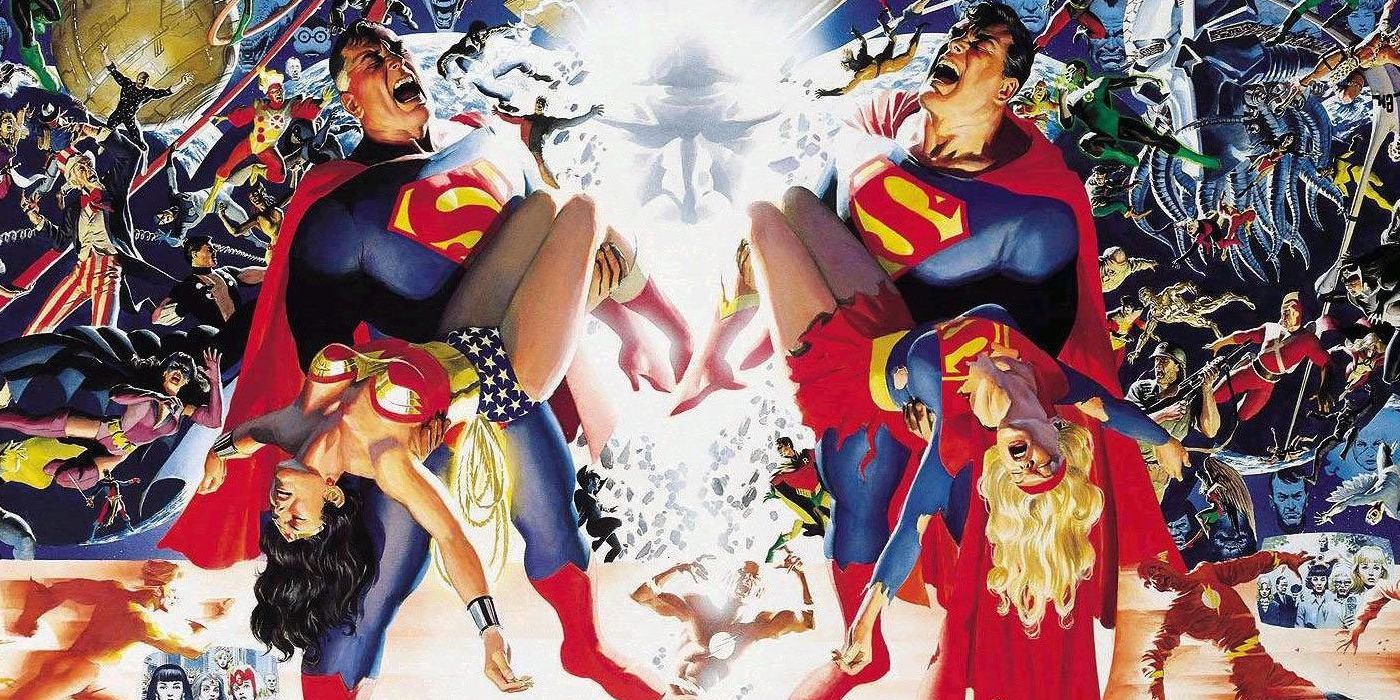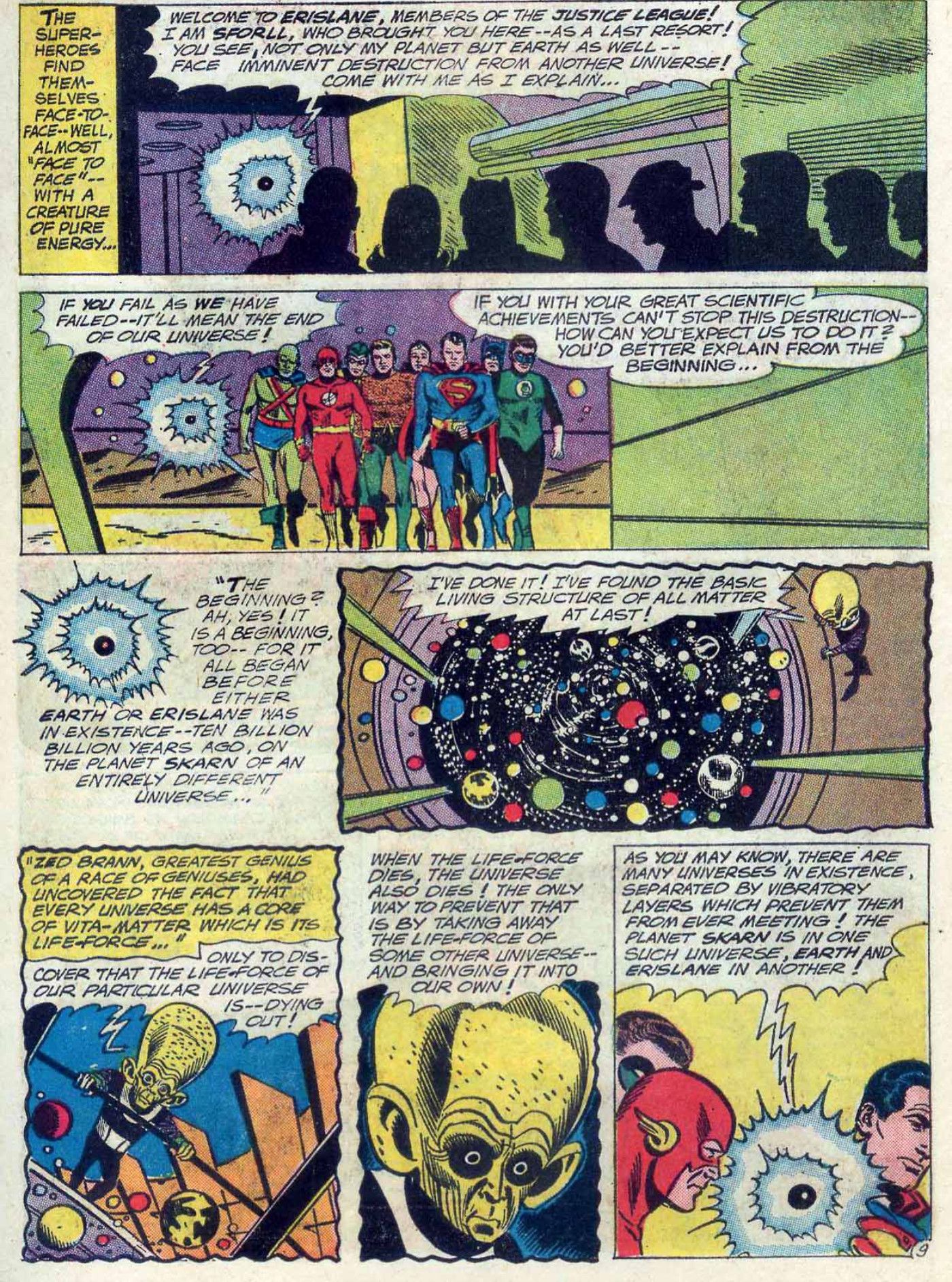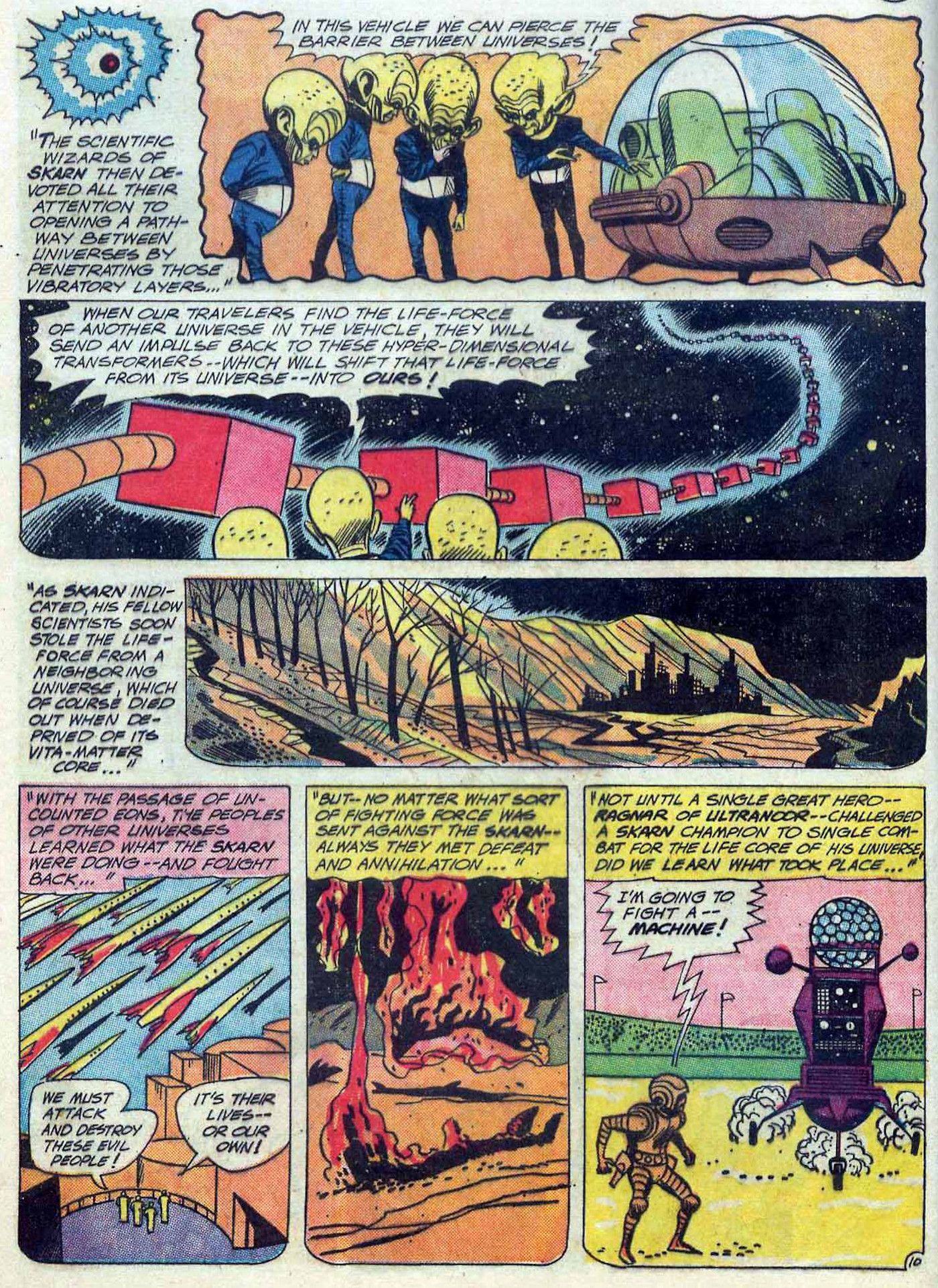An early Justice League adventure foreshadowed DC’s obsession with “Crisis” events. Since the advent of DC’s multiverse, the publisher has used “Crisis” events to bring heroes of the various Earths together, uniting them against a common foe. DC has published several such titles; at this point, the word “Crisis” carries certain connotations in the DC Universe, and the publisher’s obsession with them was hinted at in 1962’s Justice League of America #13.
DC opened up its multiverse in 1961’s The Flash #123 by Gardner Fox and Carmine Infantino, when the Silver Age Flash (Barry Allen) met the Golden Age Flash (Jay Garrick) thanks to Barry accidentally traveling to Earth-2. This story established that Earth-2 was the home of the publisher’s Golden Age heroes, such as the Justice Society, with their Silver Age counterparts residing on Earth-1. Team-ups between the Society and the Justice League became a yearly event and eventually other Earths were introduced. This first incarnation of the multiverse came to an end in 1985’s epic Crisis on Infinite Earths, which consolidated the various Earths into one. This held for almost 20 years, until Infinite Crisis and 52 brought the multiverse back; it has been integral to DC ever since, even after Flashpoint, another Crisis event that reset the DC Universe. These Crisis events have become so common the publisher has revealed the existence of “Crisis Energy,” a cosmic force that can alter reality. DC loves its Crisis events–and this obsession can be traced back to an early Justice League adventure.
The Blueprint For Future Crisis Events was Created Here
The story, titled “The Riddle of the Robot Justice League,” was written by Gardner Fox and drawn by Mike Sekowsy. The Justice League is abducted by a mysterious alien entity and brought to his headquarters. The alien reveals he means no harm–in fact, he needs the League’s help. An alien race from a parallel universe is stealing the life forces of other universes, in a bid to keep theirs alive. These aliens, called the Skarn, extract the “vita-matter” core of universes–and now they have set their sights on Earth-1. If they are successful, then the entire universe is doomed, and the Skarn will be free to continue their assault on the multiverse.
A number of classic Crisis event tropes are present in “The Riddle of the Robot Justice League”: a powerful evil alien force threatening the entire multiverse, and heroes coming together to stop it. However, “Riddle” is much smaller in scope than the Crisis events that followed–the Justice Society is not present, nor were there any continuity changes. Yet with its focus on an all-encompassing threat to the multiverse, it can be argued this story provided the blueprint for all Crisis events that followed. While the Skarn are never seen again, their villainy provided the template for the Anti-Monitor, Parallax, Perpetua and other Crisis event antagonists.
DC’s multiverse was still a brand-new concept at the time, its existence being revealed roughly a year before “The Riddle of the Robot Justice League” saw publication. Creators were still feeling it out, seeing what worked and what didn’t. Clearly, the Skarn did not work as they have never been seen again, but the idea of a major threat to the multiverse was too good to let go, and a year later, the Justice League met the Justice Society for the first of many official Crisis events. These “Crisis” events have become a fixture of DC Comics, and one early Justice League story foreshadowed this obsession.



